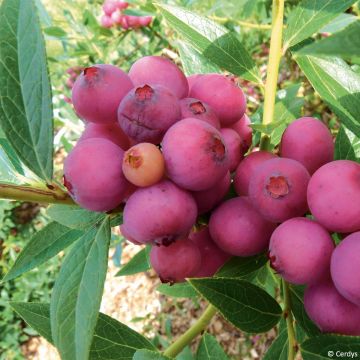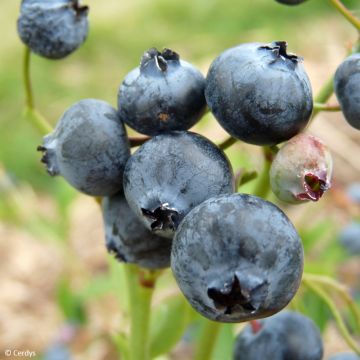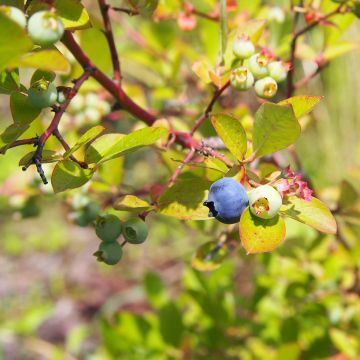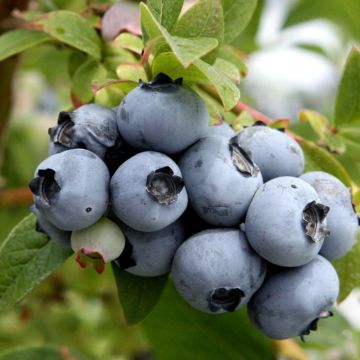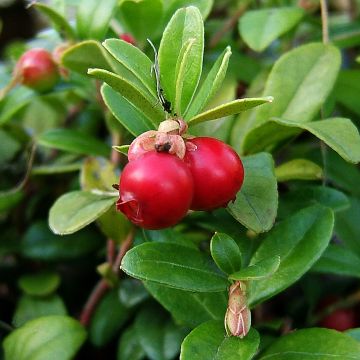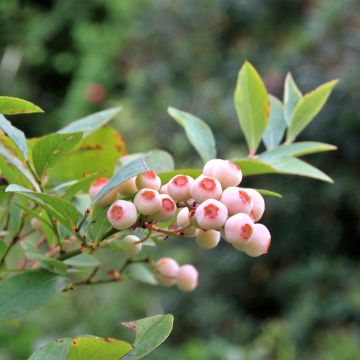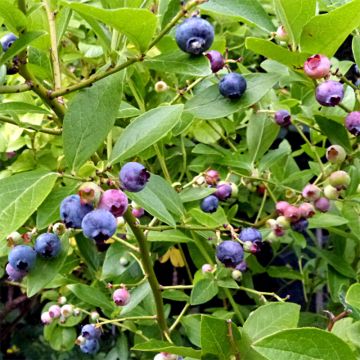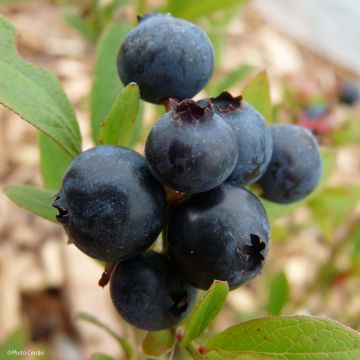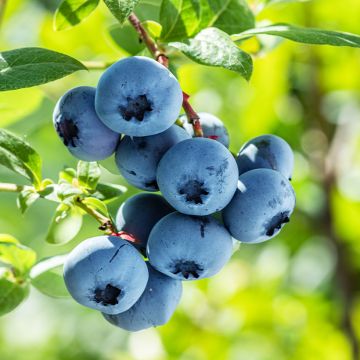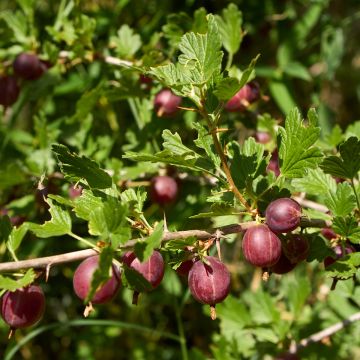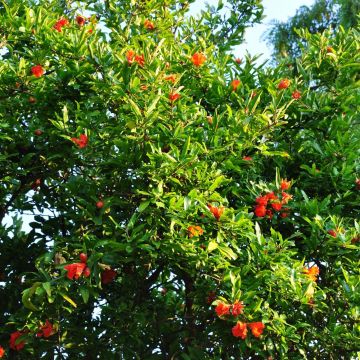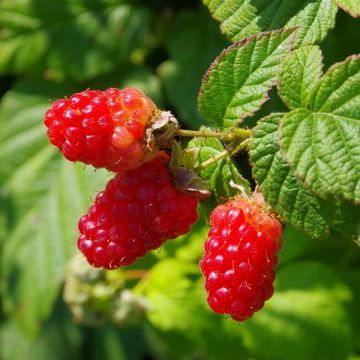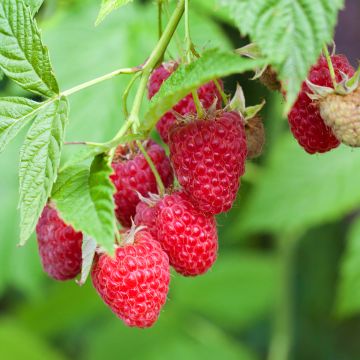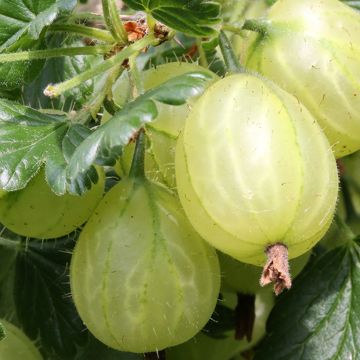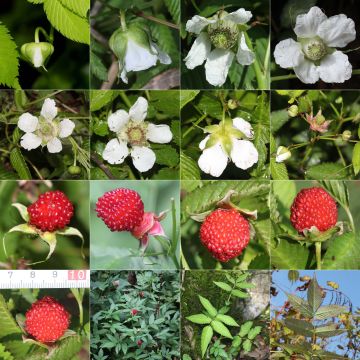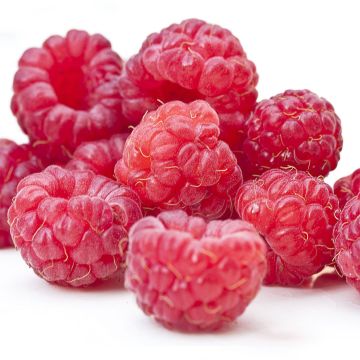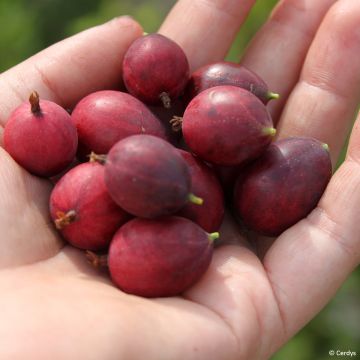

Vaccinium Patriot' Bio - Organic Blueberry
Vaccinium corymbosum x myrtillus Patriot
Northern Highbush Blueberry, European Blueberry
This item cannot be shipped to the selected country
Delivery charge from €5.90
More information
Schedule delivery date,
and select date in basket
This plant carries a 6 months recovery warranty
More information
We guarantee the quality of our plants for a full growing cycle, and will replace at our expense any plant that fails to recover under normal climatic and planting conditions.
From €5.90 for pickup delivery and €6.90 for home delivery
Express home delivery from €8.90.

Description
The Organic 'Patriot' Blueberry, derived from Vaccinium x corymbosum, forms a bushy, vigorous bush, interesting for its rather compact habit, its cold resistance, its regular and high yield, as well as its natural resistance to diseases such as phytophthora. The flowering is early, taking place in early May. The fruiting, spread out, occurs between late June and late July, in clusters of dark blue blueberries, composed of very large, firm berries with a rustic and assertive taste. The plant requires the presence of a pollinator to bear fruit. It displays a stunning foliage in autumn, bright orange. It is a bush for acidic, well-drained soil, which appreciates dappled sunlight or partial shade.
Vaccinium x corymbosum 'Patriot' belongs to the Ericaceae family, like heathers and rhododendrons. It is the result of a cross-breeding between the European species Vaccinium myrtillus, with tasty but small fruits, and the species Vaccinium corymbosum with a larger growth but less flavourful fruits, native to New England, USA. 'Patriot' is a highly productive variety, forming a bushy shrub with a compact habit, reaching a height of 1.20m (4ft), with a spread of 60cm (24in). The deciduous leave are 2 to 3cm (1in) long, lanceolate, elliptical, entire and toothed, medium green, turning bright orange in autumn. The flowering takes place in early May, in the form of small white bell-shaped flowers with faded red edges, 0.5 to 1cm (0in) long, gathered in pendulous clusters 2 to 5cm (1 to 2in) long, at the end of the stems. It is followed by large blue berries covered with bloom, 1cm (0in) in diameter, which ripen from late June to late July. The harvest will be staggered according to the ripeness of the fruits. The blueberries are firm and sweet, with a pronounced, slightly resinous and aromatic flavour. The yield is excellent, around 6kg per plant. Blueberries are low in calories but highly nutritious: they are very rich in vitamins A, B, and C, calcium, and iron. They contain pigments (anthocyanins) that improve night vision.
To bear fruit, the 'Patriot' Blueberry needs the presence of another bush, of the same variety or a different variety. Plant 'Brigitta Blue' or 'Spartan' Blueberries near it to ensure a good harvest. You can combine the Patriot Blueberry in your heathland bed with other acid-loving plants such as rhododendrons, azaleas, hydrangeas, heathers... Blueberries can be consumed freshly picked, in juice, jam, jelly, and in pastries (pies, sorbets).
Report an error about the product description
Plant habit
Fruit
Flowering
Foliage
Botanical data
Vaccinium
corymbosum x myrtillus
Patriot
Ericaceae
Northern Highbush Blueberry, European Blueberry
Cultivar or hybrid
Other Blueberry bush
Planting and care
If the soil suits it, the 'Patriot' Blueberry is a plant that will grow and bear fruit on its own. Install it in an acidic soil (pH between 4 and 5.5), pure peat soil or a mixture of ordinary soil and peat, well-decomposed bark compost. In limestone soil, you need to dig a hole 50 to 60cm (20 to 24in) deep, line the edges with a garden felt, place a non-limestone gravel bed 10cm (4in) thick at the bottom, then fill with an acidic soil mixture. The soil should remain moist, but without stagnant moisture. If watering is necessary, it should be done with non-limestone and non-chlorinated water. This bush likes filtered light, especially if it lives in a region with hot summers. You should protect it from dry winds and high temperatures. Mulch the base with crushed bark, straw, or fern leaves. From the third year onwards, apply a rhododendron fertilizer in autumn, and ammonium sulphate in spring.
Planting period
Intended location
Care
-
, onOrder confirmed
Reply from on Promesse de fleurs
Berries
Haven't found what you were looking for?
Hardiness is the lowest winter temperature a plant can endure without suffering serious damage or even dying. However, hardiness is affected by location (a sheltered area, such as a patio), protection (winter cover) and soil type (hardiness is improved by well-drained soil).

Photo Sharing Terms & Conditions
In order to encourage gardeners to interact and share their experiences, Promesse de fleurs offers various media enabling content to be uploaded onto its Site - in particular via the ‘Photo sharing’ module.
The User agrees to refrain from:
- Posting any content that is illegal, prejudicial, insulting, racist, inciteful to hatred, revisionist, contrary to public decency, that infringes on privacy or on the privacy rights of third parties, in particular the publicity rights of persons and goods, intellectual property rights, or the right to privacy.
- Submitting content on behalf of a third party;
- Impersonate the identity of a third party and/or publish any personal information about a third party;
In general, the User undertakes to refrain from any unethical behaviour.
All Content (in particular text, comments, files, images, photos, videos, creative works, etc.), which may be subject to property or intellectual property rights, image or other private rights, shall remain the property of the User, subject to the limited rights granted by the terms of the licence granted by Promesse de fleurs as stated below. Users are at liberty to publish or not to publish such Content on the Site, notably via the ‘Photo Sharing’ facility, and accept that this Content shall be made public and freely accessible, notably on the Internet.
Users further acknowledge, undertake to have ,and guarantee that they hold all necessary rights and permissions to publish such material on the Site, in particular with regard to the legislation in force pertaining to any privacy, property, intellectual property, image, or contractual rights, or rights of any other nature. By publishing such Content on the Site, Users acknowledge accepting full liability as publishers of the Content within the meaning of the law, and grant Promesse de fleurs, free of charge, an inclusive, worldwide licence for the said Content for the entire duration of its publication, including all reproduction, representation, up/downloading, displaying, performing, transmission, and storage rights.
Users also grant permission for their name to be linked to the Content and accept that this link may not always be made available.
By engaging in posting material, Users consent to their Content becoming automatically accessible on the Internet, in particular on other sites and/or blogs and/or web pages of the Promesse de fleurs site, including in particular social pages and the Promesse de fleurs catalogue.
Users may secure the removal of entrusted content free of charge by issuing a simple request via our contact form.
The flowering period indicated on our website applies to countries and regions located in USDA zone 8 (France, the United Kingdom, Ireland, the Netherlands, etc.)
It will vary according to where you live:
- In zones 9 to 10 (Italy, Spain, Greece, etc.), flowering will occur about 2 to 4 weeks earlier.
- In zones 6 to 7 (Germany, Poland, Slovenia, and lower mountainous regions), flowering will be delayed by 2 to 3 weeks.
- In zone 5 (Central Europe, Scandinavia), blooming will be delayed by 3 to 5 weeks.
In temperate climates, pruning of spring-flowering shrubs (forsythia, spireas, etc.) should be done just after flowering.
Pruning of summer-flowering shrubs (Indian Lilac, Perovskia, etc.) can be done in winter or spring.
In cold regions as well as with frost-sensitive plants, avoid pruning too early when severe frosts may still occur.
The planting period indicated on our website applies to countries and regions located in USDA zone 8 (France, United Kingdom, Ireland, Netherlands).
It will vary according to where you live:
- In Mediterranean zones (Marseille, Madrid, Milan, etc.), autumn and winter are the best planting periods.
- In continental zones (Strasbourg, Munich, Vienna, etc.), delay planting by 2 to 3 weeks in spring and bring it forward by 2 to 4 weeks in autumn.
- In mountainous regions (the Alps, Pyrenees, Carpathians, etc.), it is best to plant in late spring (May-June) or late summer (August-September).
The harvesting period indicated on our website applies to countries and regions in USDA zone 8 (France, England, Ireland, the Netherlands).
In colder areas (Scandinavia, Poland, Austria...) fruit and vegetable harvests are likely to be delayed by 3-4 weeks.
In warmer areas (Italy, Spain, Greece, etc.), harvesting will probably take place earlier, depending on weather conditions.
The sowing periods indicated on our website apply to countries and regions within USDA Zone 8 (France, UK, Ireland, Netherlands).
In colder areas (Scandinavia, Poland, Austria...), delay any outdoor sowing by 3-4 weeks, or sow under glass.
In warmer climes (Italy, Spain, Greece, etc.), bring outdoor sowing forward by a few weeks.


































